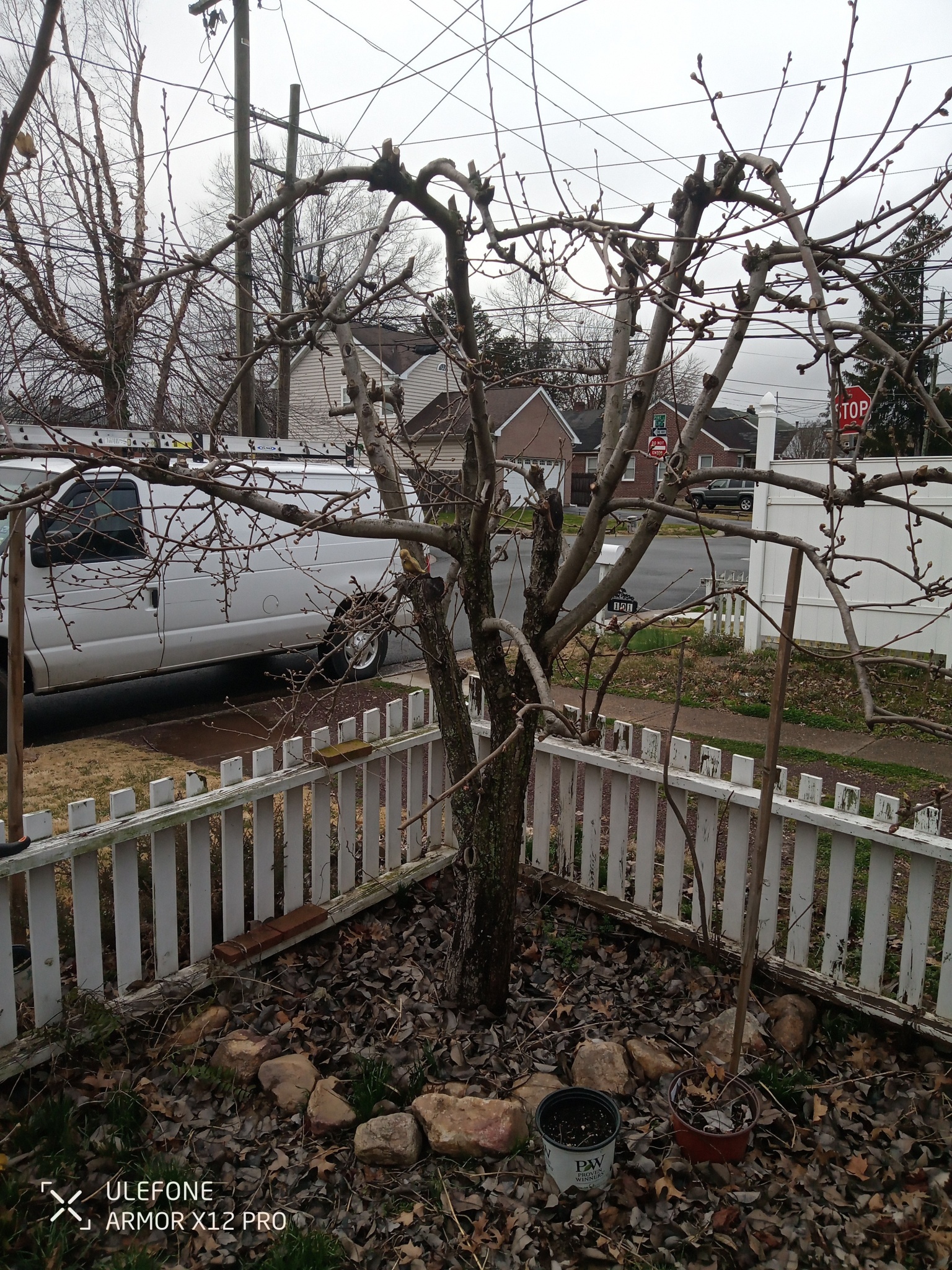Hello all, There was a pear tree in my Wilmington, Delaware yard when i moved in and being an avid brewer and growing up with pear trees, i was stoked. 2 years ago i bought more trees and put them in. Not having a lot of room i picked a 4-in-1 pear, 4-in-1 apple (baking/cider), a granny smith semi dwarf and a cherry, all from Home Depot. they have been doing well. last year was 1st year fruit with granny smith. I later realized the cherry needed a second tree to pollinate, so i bought a second one online and all has been well so far. i am somewhat new to caring for these so just looking tips and tricks as i go along.
I just today purchased online some Scionwood to graft some cider apples to my 4-in-1 apple and some eating apples to the granny smith. I also purchased some perry pears as well to graft onto the older pear tree that came with the property or maybe the newer one ( to get a variety and some complexity to my ciders and perry)
Tree that came with house i believe is a Bartlett.
The 4 in one pear is Bosc, Red bartlett, Anjou, and Flemish - no production yet
The 4 in one apple is Gravenstien, Jonathan, Cortland and a mystery cultivar - no production yet
then i have a Granny Smith apple - Produced 1st time last year with really nice fruit.
Royal anne cherry and then i believe its a Bing cherry. - no production yet
Scionwood just purchased
- Empire and Candycrisp to graft onto the granny smith for eating apples
- AR Black, Golden Russet, Goldrush - to graft onto the Cider apple tree
- Brandy Pears, Barland Pears, Butt Pears, Winnal's Longdon, to graft onto either the older pear of the newer grafted pear tree.
Any suggestions or tips as far as grafting goes would be much appreciated,or anything you see that jump out as non-compatible This will be my first attempt and i have been practicing the graft unions with some pear wood that was pruned off. I have been reading and researching extensively. very anxious for this years harvest!
If you want more rapid growth on your new pear grafts, graft to your old tree to convert it to the new varieties. A hard pruning down to larger scaffold limbs now, while the tree is still dormant, and addition of the new varieties in cleft or veneer grafts, will push lots of regrowth. You may get some water sprouts too. Maybe leave them grow until you see whether your grafts take. If you’re not successful with this year’s grafting then next year you can whip and tongue graft onto the water sprout whips.
Thank for the responses, that video has good info!
After pruning, turns out I didn't know as much as I thought I did. I was trying to keep apples small and topped them a bit and now realize it should be avoided. They are still young so I am holding off until I am more positive on what I'm trying to achieve.
I am now researching pruning the trees.
The older tree was pruned last year and still has some water sprouts, I was going to cut them but maybe I can use them? I'll post a pic when I can. It's close to neighbors property so trying to keep it closer and train the lateral growth towards my yard.
I think the buds are starting to open already on the older tree so hopefully I am not too late. I'm going to try to act fast once the scions come in
Hi Krausen9,
DOn't beat yourself up about not doing everything perfectly. We could bore you to death with all the mistakes we made, and that's how we became successful orchardists. Just keep learning and trying things. You are absolutely on the right track.
You probably don't want to graft onto a sprout that came out of the bottom of the tree trunk, as then you'll have multiple tree trunks.
John S
PDX OR


 Thank you, good thing I learn best by making mistakes! I am going to attach a pic of the 2 pear trees.. I have been pruning the older one back slowly and essentially just promoting outward growth and reducing size without doing too much at once. It has produced a decent amount and next year I want to prune even more back so that has me thinking my grafts are going to go on the newer pear which I haven't pruned yet.
Thank you, good thing I learn best by making mistakes! I am going to attach a pic of the 2 pear trees.. I have been pruning the older one back slowly and essentially just promoting outward growth and reducing size without doing too much at once. It has produced a decent amount and next year I want to prune even more back so that has me thinking my grafts are going to go on the newer pear which I haven't pruned yet.
Yes, you want to prune it so that it has air flowing through the center of it. That way it is less humid and dries out faster. Fewer diseases. 4 D's: Cut diseased, damaged, duplicating (crossing) and deranged? I forget the 4th one. So a robin could fly through it.
John S
PDX OR
Idyllwild
jafar
Marsha H
Viron
1 Guest(s)
